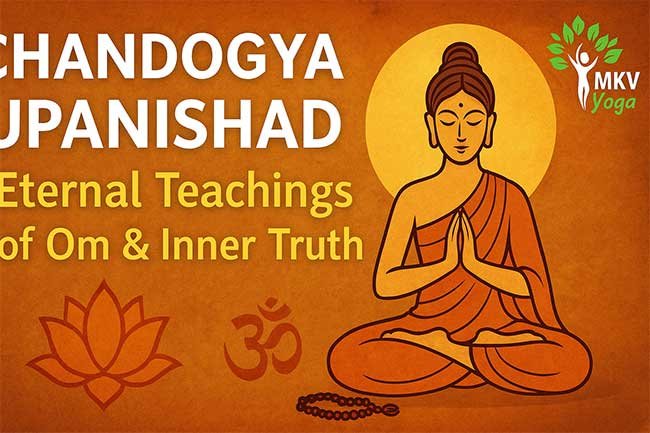The Chandogya Upanishad, one of the oldest and most important Vedic scriptures, is a part of the Sama Veda. This ancient text reveals profound insights into the nature of the Self (Atman), the universe (Brahman), and the ultimate reality. It teaches the significance of meditation, the power of Om (the sacred syllable), and the eternal quest for spiritual knowledge. Considered a cornerstone of Indian philosophy, the Chandogya Upanishad continues to inspire seekers of truth across the world.
Table of Contents
What is the Chandogya Upanishad?
The Chandogya Upanishad is a philosophical text within the Sama Veda. It emphasizes the unity of the soul with the supreme consciousness (Atman is Brahman). The Upanishad uses stories, dialogues, and metaphors to explain the deep connection between the individual self and the ultimate reality.
Chandogya Upanishad Summary
The text is divided into eight chapters, each carrying symbolic lessons:
-
Chapter 1–2: Importance of Om and meditation.
-
Chapter 3–5: Unity of all beings and the interconnectedness of life.
-
Chapter 6: Famous teaching “Tat Tvam Asi” (Thou Art That).
-
Chapter 7–8: Knowledge of Brahman, self-realization, and liberation (Moksha).
Key Teachings of Chandogya Upanishad
-
Om as the Universal Sound – Om represents the ultimate truth and cosmic vibration.
-
Tat Tvam Asi (Thou Art That) – The soul (Atman) is not separate from the universal spirit (Brahman).
-
Power of Meditation – Liberation can be attained through deep meditation and self-awareness.
-
Unity in Diversity – All beings are connected, forming one ultimate reality.
Chandogya Upanishad and Philosophy of Om
The Upanishad highlights Om (Aum) as the sound of creation, preservation, and dissolution. Chanting Om with awareness is seen as a way to harmonize the self with the universe.
Chandogya Upanishad in Daily Life
Even though it is thousands of years old, its wisdom is timeless:
-
Practice meditation with the sound of ‘Om’ to calm the mind.
-
See divinity in all beings (Tat Tvam Asi).
-
Cultivate knowledge, truth, and compassion as spiritual practices.
FAQs on Chandogya Upanishad
Q1. What is the Chandogya Upanishad about?
It is about the unity of the soul (Atman) with the supreme reality (Brahman), the power of meditation, and the sacred syllable Om.
Q2. Why is the Chandogya Upanishad important?
It contains the famous teaching “Tat Tvam Asi”, a central concept in Vedanta philosophy, which guides seekers toward self-realization and liberation.
Q3. How old is this Upanishad?
It is one of the oldest Upanishads, composed between 800 and 600 BCE.
Q4. How can I apply its teachings in my life?
By meditating on Om, living truthfully, and realizing the unity of all existence.
Conclusion
The Chandogya Upanishad is more than a sacred text; it is a guide to inner awakening and self-realization. Its timeless teachings of Om, meditation, and Tat Tvam Asi remind us that the divine resides within each one of us. By embracing its wisdom, we can move closer to truth, harmony, and spiritual liberation.
You may like to read –
Upanishads: The Eternal Wisdom of Self, Soul & Spiritual Awakening

